Taxis & Private Transfers to and from Brussels Airport (BRU)
Taxi, Minibus & Group Transportation | Fixed Price | Available 24/7 | Flight Monitoring
Architecture Types You Can Expect to Find in Brussels
Brussels offers a wide variety of architecture. Explore them on your next visit in Brussels.
2024-09-25 | TRAVEL GUIDE
For all of you architecture buffs out there, Brussels has a variety of eye-candies to offer. Strolling around town reveals that the capital of Art Nouveau actually has a lot more to offer than just Victor Horta mansions. Here you can find a guide to Brussels’ architectural highlights, divided up into five styles. Make sure to book your stay at one of the top luxury hotels in Brussels and arrange for an airport shuttle pick up, hassle-free.
Art Nouveau
When talking about Art Nouveau, Victor Horta’s major town houses are not to be missed. The European capital is lined with buildings from Belgium’s own architecture revolutionary and Art Nouveau’s leading light, Victor Horta.
The four town houses selected by UNESCO to be on their World Heritage List are a good place to start: Hôtel Tassel, Hôtel Solvay, Hôtel van Eetvelde, and Atelier Horta, all revolutionary in their use of industrial materials like steel and glass, wrought iron features, meticulous wood paneling and sunbathed living spaces.
So make sure to see at least these four while in Brussels. If you have more time, here are even more places you should add to your list:
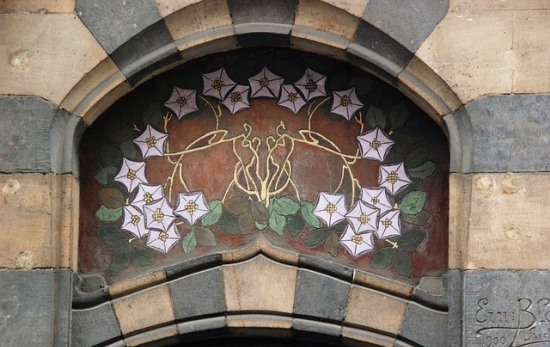
Maison Saint-Cyr by Gustave Strauven
Gustave Strauven, mentored by Horta and an assistant in creating Hôtel van Eetvelde, took over the Art Nouveau baton from the modernist pioneer. His remarkable Maison Saint-Cyr on Ambiorix Square showcases a true commitment to wrought iron embellishments and an overall flamboyant aesthetic.
Maison Cauchie by Paul Cauchie
The former home of artist couple Paul and Caroline Cauchie was luckily saved by the grace of two Art Nouveau-loving owners, today open to the public every first weekend of the month. Its façade is the most striking part, embellished by Paul Cauchie in the sgraffito wall paintings for which he would become famous. One of the golden murals shows the words “Par nous, pour nous” (By us, for us), witnessing for the duo’s loving decoration of their own home.
MIM by Paul Saintenoy
The Musical Instruments Museum on top of the Mont des Arts is one of the greatest examples of modernism in Brussels. Interestingly, it wasn’t designed by Horta like many tourists assume. This spectacular beauty is a child of of Paul Saintenoy, who originally designed it to house the Old England department store, as the name engravings still show. The façade is defined by glass, finished with wrought iron rails of plant motifs and a unique cast-iron turret.
Art Deco
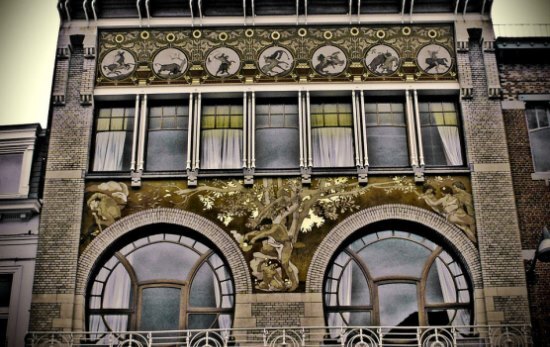
Flagey by Joseph Diongre
The Flagey is a steamboat-shaped building rising up beside Ixelles’ most famous square and looking out over its pond, standing as a fine example of Art Deco structures. Additionally, Joseph Diongre created studios with world-class acoustics for the former national radio and television institute.
Koekelberg Basilica by Albert Van Huffel
This building on the Koekelberg hill is the largest Art Deco structure in the world and one of the largest basilicas. For a long time, it seemed as if the ambitious masterpiece would never be completed, with its construction detained by two world wars and a constant lack of funds. Today, this Art Deco place of worship dominates the west part of the Brussels skyline with its green copper dome.
L’Archiduc by F. Van Ruyskensvelde
The L’Archiduc bar, a creation by F. Van Ruykensvelde, has many lives as it approaches its 80th birthday. From a discrete rendez-vous place for businessmen and their secretaries to jazz temples frequented by the likes of Miles Davis, it’s easy to see why this Art Deco establishment continues to be highly famous among the visitors. A buzzer and a cast-iron door will guide you to the atmospheric setting with original wooden benches, rosewood bar, and art gallery.
Neo-classical
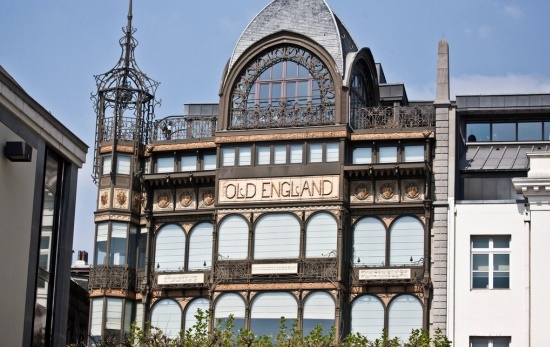
Place Royale by Barnabé Guimard
Rebuilt after a fire in the Neo-classical style that Austrian rule dictated at the time, Brussels’ spacious Royal Square showcases grandeur in its finest. The symmetrical building blocks that surround it and its central Godfrey of Bouillion statue include the Magritte Museum in the splendidly renovated Altenloh Hotel, the Saint Jacques-sur-Coudenberg Church, and the Royal Museums of Fine Arts.
Gothic
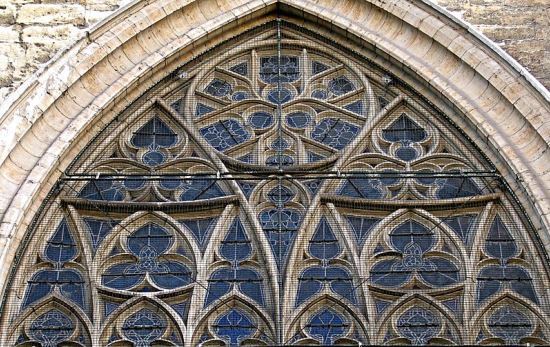
City Hall
When it comes to Gothic hallmarks, there’s no beating Brussels’ Town Hall and its army of façade statues. This place should be on the top of your list of places to see in Brussels.
St Michael and St Gudula Cathedral
Brabantian Gothic architecture reached its apex with the completion of St. Michael and St. Gudula’s on top of the Treurenberg hill in the 16th century. The inside of the cathedral, today a setting for royal weddings, funerals, and Sunday carillon concerts, has been remarkably kept for a Gothic construction. The eye is free to wander along the magnificent vaulted ceiling and enormous stained-glass windows, depicting biblical scenes.
Neo-renaissance
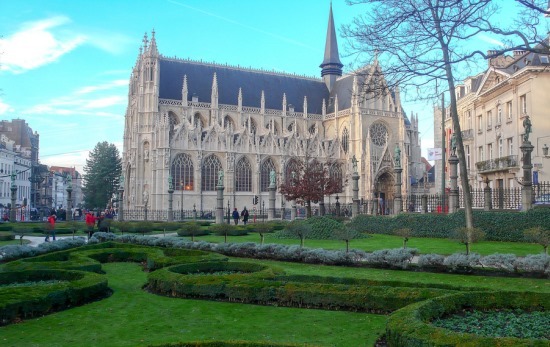
Galeries Royales Saint-Hubert by Jean-Pierre Cluysenaer
A 19th-century building, the Galeries Royales Saint-Hubert display a 200 meters of strolling path past luxurious shop displays. One of the first of its kind, the popularity of young architect Jean-Pierre Cluysenaer’s glazed arcade spoke volumes about the urban experience the modern city dweller longed – and still longs – for. The multi-purpose, Italian-style space incorporates everything from high-end boutiques to restaurants and a cinema theater.
The best thing to do while in Brussels is to dedicate a whole day of walking and taking in its diverse architecture and important buildings. We recommend pairing this experience with tasting the most popular Belgian dishes, before you get your airport taxi transfers and leave the city.